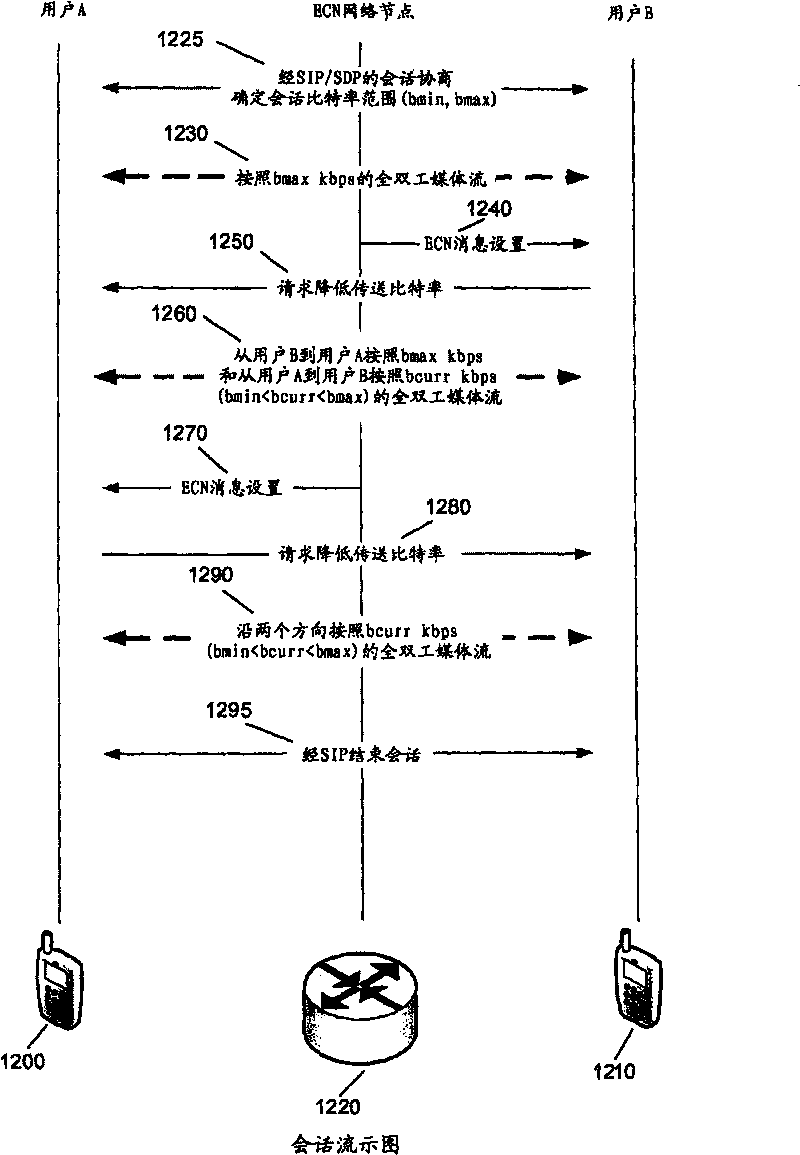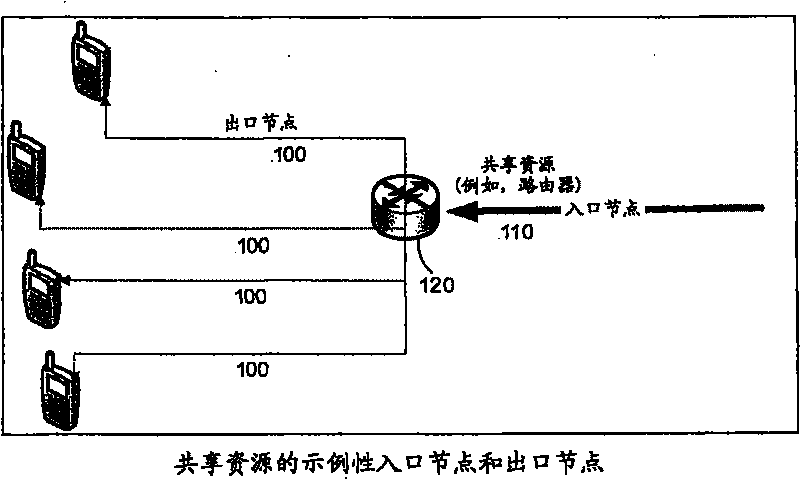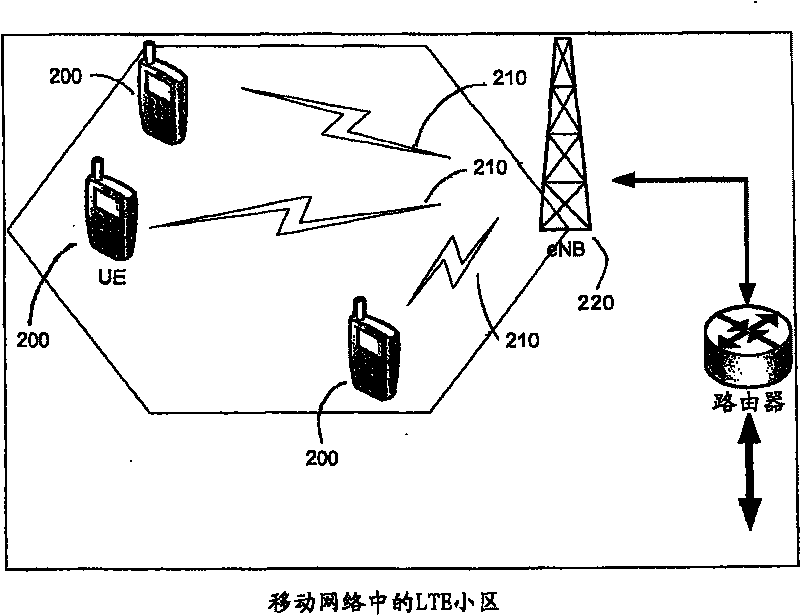Adaptive rate control in a communications system
A rate and control unit technology, applied in transmission systems, wireless communications, digital transmission systems, etc., can solve the problems of not being able to see the business as working, affecting the transmission delay, etc., to eliminate the needs or requirements of user tracking and service reminders. Effect
- Summary
- Abstract
- Description
- Claims
- Application Information
AI Technical Summary
Problems solved by technology
Method used
Image
Examples
Embodiment approach
[0066] 1. First embodiment: the receiver 700 estimates a bit rate modification based on the current received bit rate 740 and the effective session bit rate range 720 , and transmits a rate modification request 480 that may include the estimated bit rate modification to the sender 800 . The sender determines a new modified bit rate for transmission to the receiver. For the case where the estimated bit rate modification is included in the rate modification request from the receiver, the sender can choose whether to employ the bit rate modification requested by the receiver.
[0067] 2. Second embodiment: the receiver 700 estimates the bit rate modification based on at least the current received bit rate 740 and the effective session bit rate range 720, and determines the bit rate modification to be performed. The receiver can be further extended to consider various information types or parameters when determining the bitrate modification to make. The receiver transmits to the ...
PUM
 Login to View More
Login to View More Abstract
Description
Claims
Application Information
 Login to View More
Login to View More - R&D
- Intellectual Property
- Life Sciences
- Materials
- Tech Scout
- Unparalleled Data Quality
- Higher Quality Content
- 60% Fewer Hallucinations
Browse by: Latest US Patents, China's latest patents, Technical Efficacy Thesaurus, Application Domain, Technology Topic, Popular Technical Reports.
© 2025 PatSnap. All rights reserved.Legal|Privacy policy|Modern Slavery Act Transparency Statement|Sitemap|About US| Contact US: help@patsnap.com



